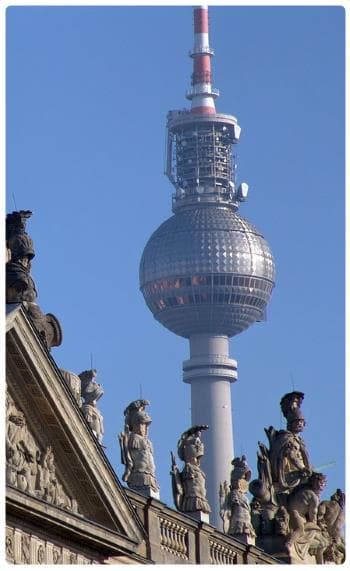|
|
GUIDE
TO BERLIN: 150 PAGES OF COMPLETE INFORMATION
|
How many
times in recent years have you thought about
visiting Berlin? What attracts of this
city? For sure the history of a city completely
razed to the ground after 1945 and reborn from its
ashes. A city then divided and torn in between for
28 years by barbed wire and a huge concrete wall:
the Berlin Wall, which, despite itself, became a
world icon. Berlin attracts above all for something
that is not visible to the naked eye, its atmosphere
as a place in the center of the world. Here you have
the feeling of living history live.
|
|
Many young people come here
bringing their ideas, creating one of the most interesting
cultural melting pots in Europe... art, architecture,
fashion, design, ecology.
The
challenge, becoming "Capital of Europe"
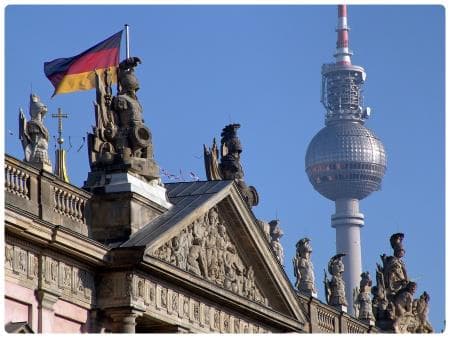 The
capital of Germany, one of the 16 states (Länder)
that make up the Federal Republic of Germany, is in
the midst of a "rebirth" that has been going on for many
years now, to the point of contending in
London
and
Paris
for European cultural supremacy. Also thanks to its
tormented past, it has become a point of reference for
fashion,
art
(including
Street Art),
design, music and ecology (public green occupies more than
30% of the city's surface). After German reunification, the
city has never ceased to be an open-air construction site.
The young Germans and Europeans who arrived here form vital
lifeblood in building the future. The
capital of Germany, one of the 16 states (Länder)
that make up the Federal Republic of Germany, is in
the midst of a "rebirth" that has been going on for many
years now, to the point of contending in
London
and
Paris
for European cultural supremacy. Also thanks to its
tormented past, it has become a point of reference for
fashion,
art
(including
Street Art),
design, music and ecology (public green occupies more than
30% of the city's surface). After German reunification, the
city has never ceased to be an open-air construction site.
The young Germans and Europeans who arrived here form vital
lifeblood in building the future.
Old and brand new
From the oldest
Nikolaiviertel
neighborhoods in
Berlin onwards, the past in this city is
always present: the
Reichstag,
Brandenburg Gate,
Checkpoint Charlie,
Museum Island,
Schloss
Charlottenburg, the
Gemäldegalerie
and what remains of the "Wall",
the most famous wall in the world. Cafes, bars and clubs are
full on every day of the week.
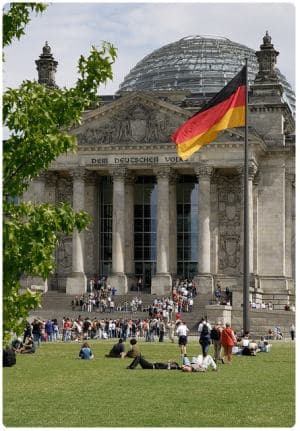 From
streets, neighbourhoods, monuments and
airports
(we are waiting for the completion of Berlin Brandenburg's
major airport), everything has changed in a short time. If
you've been here before the fall of the wall, you'll find it
hard to recognize these roads, but even if you've been here
a few years ago, you'll find plenty of news. There are so
many
things to see and do, but beyond this what will
strike you will not be material but rather "spiritual", an
air that is everywhere progressive, vibrant, interesting! From
streets, neighbourhoods, monuments and
airports
(we are waiting for the completion of Berlin Brandenburg's
major airport), everything has changed in a short time. If
you've been here before the fall of the wall, you'll find it
hard to recognize these roads, but even if you've been here
a few years ago, you'll find plenty of news. There are so
many
things to see and do, but beyond this what will
strike you will not be material but rather "spiritual", an
air that is everywhere progressive, vibrant, interesting!
If you are curious and want to get a general idea of the
city, this is the right page for
101
questions and answers about Berlin.
If you have little time to visit Berlin, optimize it by
booking a
guided
tour.
Top
A liveable city
despite its size
 Despite
the frenetic pace and greatness, Berlin remains a pleasant
and enjoyable city, where you can relax, where the
new Europeans live in the neighborhood where they live and
strive to improve it. If you're a few days away, maybe you
won't feel it but you're a few months old, you'll appreciate
the sociality of the neighborhood, the desire to
participate. Traffic is fluid, car sharing is
widespread, public transport is excellent, roads are safe.
The green spaces are everywhere, large, and there are spaces
and games for children in every street. Berlin is certainly
a
child-friendly city. Despite
the frenetic pace and greatness, Berlin remains a pleasant
and enjoyable city, where you can relax, where the
new Europeans live in the neighborhood where they live and
strive to improve it. If you're a few days away, maybe you
won't feel it but you're a few months old, you'll appreciate
the sociality of the neighborhood, the desire to
participate. Traffic is fluid, car sharing is
widespread, public transport is excellent, roads are safe.
The green spaces are everywhere, large, and there are spaces
and games for children in every street. Berlin is certainly
a
child-friendly city.
The city is the most populous of the country with its
approximately 3.5 million inhabitants (4.2 with the
metropolitan area), from its modest origins it has become
one of the capitals of the world, a driving force at
international level, in the scientific, commercial,
technological, cultural and political fields.
Top
9 November 1989 an
unforgettable date
The modern
world changed on 9 November 1989 with the fall of the
Berlin
Wall. The generation born with the "Cold War"
(when the Soviet Union and America fought a political war,
without armed clashes, but made up of blackmail, threats and
propaganda) saw finally the symbol of the division of the
world between East and West collapse. The great Russian
cellist Mstislav Leopoldovich Rostropovich on
November 9,1989 he improvised a concert in front of the
"wall" that was about to be knocked down, playing a sort of
requiem of the Cold War and the Soviet world, which was also
crumbling. Go see you a video shot on this memorable day,
with the guys on either side of the barricade laughing and
crying. The story of Conrad
Schumann and his leap of Hope is also moving.
The
reunification and rebirth of the city
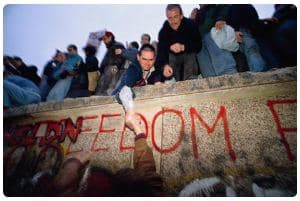 On
20 June 1991, Berlin returned to the capital of the united
Germany, taking over the title from
Bonn.
The Reunification of the city in 1990, the work of
total rebuilding the city underwent, helped to create, not
only here but also all over the world, a feeling of hope in
a better future. Despite the economic difficulties of the
reunification of the two parts of the separate city and East
Germany with West Germany, economic and social growth has
gradually been growing again. The nineties marked a new era
for the city, including tourism, with the whole world that
began to rediscover it. On
20 June 1991, Berlin returned to the capital of the united
Germany, taking over the title from
Bonn.
The Reunification of the city in 1990, the work of
total rebuilding the city underwent, helped to create, not
only here but also all over the world, a feeling of hope in
a better future. Despite the economic difficulties of the
reunification of the two parts of the separate city and East
Germany with West Germany, economic and social growth has
gradually been growing again. The nineties marked a new era
for the city, including tourism, with the whole world that
began to rediscover it.
Visitors immediately think of returning to learn more about
it, to visit the bohemian quarter or another "angry" and
graffiti-filled neighborhood. There are also many young
families who live here hoping to give their children a
better and cosmopolitan future. If you are curious, you can
read the page
Where to live in
Berlin? Or for other questions about the city
you should be thinking about, we have tried to answer
101 questions and answers about Berlin.
Top
Brief
history, culture and architecture
 Although
Berlin was founded in 1237, it was only in 1701 that it
became the capital of Prussia, the strongest state within a
myriad of states that formed what would become the German
Empire, the Reich, united in 1871 by Chancellor Otto von
Bismarck. From the 18th century, with Frederick the
Great of Prussia, up to the problems that have had to be
faced since the post-war period, the history of this city
has profoundly marked urban architecture. A place completely
satin to the ground after 1945, divided for 28 years by
barbed wire, concrete walls and a sense of opposite life, is
reborn by its ashes rediscovering its innovative nature.
Today, with the opening of modern cultural centres and the
revaluation of mythical sites such as the
Berlin Hauptbahnhof
(the largest central station in Europe), including events
such as the 2006 World Cup final or the annual Berlinale
International Film Festival, the city has reached its "security"moon.
The architecture, influenced by the renovations
following the damage of the last World War, is very varied.
Inside the city centre, you pass from the few surviving
medieval buildings near
Alexanderplatz's
spaces to the glass of the ultra-modern steel structures of
Potsdamer Plats.
Learn more about a short
history
of Berlin. Although
Berlin was founded in 1237, it was only in 1701 that it
became the capital of Prussia, the strongest state within a
myriad of states that formed what would become the German
Empire, the Reich, united in 1871 by Chancellor Otto von
Bismarck. From the 18th century, with Frederick the
Great of Prussia, up to the problems that have had to be
faced since the post-war period, the history of this city
has profoundly marked urban architecture. A place completely
satin to the ground after 1945, divided for 28 years by
barbed wire, concrete walls and a sense of opposite life, is
reborn by its ashes rediscovering its innovative nature.
Today, with the opening of modern cultural centres and the
revaluation of mythical sites such as the
Berlin Hauptbahnhof
(the largest central station in Europe), including events
such as the 2006 World Cup final or the annual Berlinale
International Film Festival, the city has reached its "security"moon.
The architecture, influenced by the renovations
following the damage of the last World War, is very varied.
Inside the city centre, you pass from the few surviving
medieval buildings near
Alexanderplatz's
spaces to the glass of the ultra-modern steel structures of
Potsdamer Plats.
Learn more about a short
history
of Berlin.
Top
Where is the "Wall"?
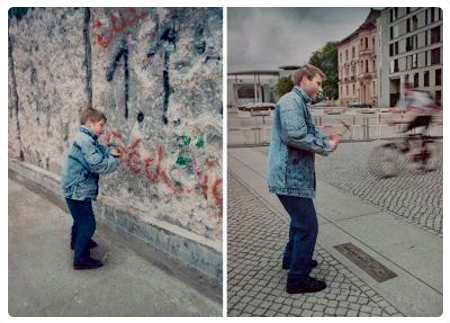 This
is undoubtedly one of the most frequent questions of those
who visit this city. What you can still see about the
"Wall", which from 1961 to 1989 split into two Berlin, are
only a few parts. In particular: a section near the
so-called East Side Gallery (1.3 km of remaining
graffiti-covered wall); a section on the famous Bernauer
Strasse where the buildings were on the border and
people were throwing themselves out of the windows to land
in the west; a part of 80 metres of wall remaining near the
Potsdamer Plats (at the end of Zimmerstraße street).
In these areas you'll find photos and captions that make
chills come along. This
is undoubtedly one of the most frequent questions of those
who visit this city. What you can still see about the
"Wall", which from 1961 to 1989 split into two Berlin, are
only a few parts. In particular: a section near the
so-called East Side Gallery (1.3 km of remaining
graffiti-covered wall); a section on the famous Bernauer
Strasse where the buildings were on the border and
people were throwing themselves out of the windows to land
in the west; a part of 80 metres of wall remaining near the
Potsdamer Plats (at the end of Zimmerstraße street).
In these areas you'll find photos and captions that make
chills come along.
As we know,
after the Second World War the city was divided into two
parts, the western part controlled by the allies
(Americans, French and English) and the eastern part
controlled by the Soviet Union. Immediately after the
war, millions of Germans moved from East Germany to West
Germany and from east Berlin to the allied part. In order to
stop what had become a real exodus, the first version of the
wall began on the night between 12 and 13 August 1961. The
shock of Berliners and the rest of the world was enormous,
with entire groups of families, friends and relatives
divided from day to night. The finished wall was 155
kilometres long. Two years later John Fitzgerald Kennedy,
in the Rudolph Wilde Platz, in front of the
Schöneberg Town Hall (Rathaus Schöneberg), made his
famous speech in which one of the historical phrases of the
20th century is contained:"Ich
bin ein Berliner", we are all Berliners.
The final
version of the "wall" was actually a double wall, with a
buffer zone that became sadly famous as the strip of
death. The number of victims over the years has been
between 150 and 250, depending on the studies. Only on 9
November 1989, after 28 years, and thanks to the positive
changes that had taken place in the Soviet Union, the wall
collapsed under the picks (and hammers) of the people and
the borders were opened. The following year, on 3 October
1990, Germany was officially reunified. In a short time the
world to the east was disappearing, with its
Trabant,
cononist illusion and houses all the same. If you want to
explore this topic in more detail, read our in-depth
studies: the
Berlin Wall,
Bernauer Strasse,
and the
East Side Gallery.
Top
The
green little man at the traffic lights
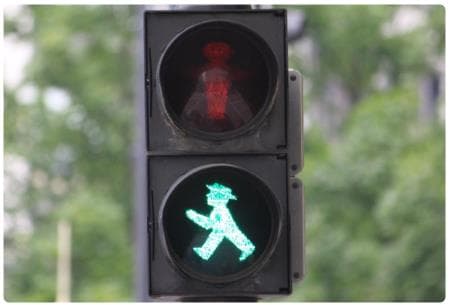 If
there are not many tracks left of the Wall. You may see a
green man with a hat on the traffic lights of the
capital, used as a symbol for pedestrian crossings. It is
called Ampelmännchen (in German literally "small
traffic light man") is a symbol taken from East Germany
survived the fall of the Wall and German reunification: a
small casual man in a hat, who showed pedestrians in the
German Socialist Republic (DDR) whether it was safe or not
to cross the road... If you want to learn more about this
Berlin icon, visit the
Ampelmännchen
page. If
there are not many tracks left of the Wall. You may see a
green man with a hat on the traffic lights of the
capital, used as a symbol for pedestrian crossings. It is
called Ampelmännchen (in German literally "small
traffic light man") is a symbol taken from East Germany
survived the fall of the Wall and German reunification: a
small casual man in a hat, who showed pedestrians in the
German Socialist Republic (DDR) whether it was safe or not
to cross the road... If you want to learn more about this
Berlin icon, visit the
Ampelmännchen
page.
Top
The
Mitte district and the Brandenburg Gate
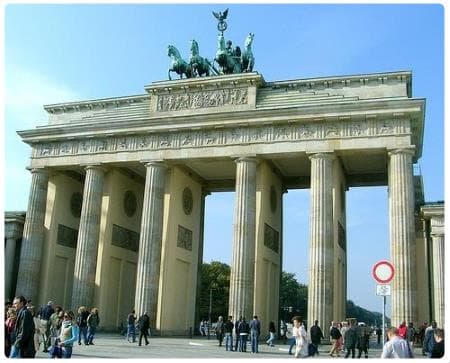 If
you are about to visit Berlin, you should know that the
Mitte district
is mostly in the historic centre of the city. Here you will
find one of the city's icons, the
Brandenburg Gate.
The Brandenburger Tor, 26 metres high and 65 metres wide, is
the only town gate still existing, the city's best-known
monument, a symbol of united Germany. This gate marked the
most famous border in the Cold War period between East and
West Berlin from 1961 to 1989. It was built between 1788 and
1791 by Carl Gothard Langhans, who was inspired by the
Propylaeans of the
Acropolis
of
Athens.
On top, as you can see from these photos, there is a
copper quadriga, the work of Johann Gotfried Schadow,
the same work that Napoleon brought to Paris in 1807,
as a booty of war. If
you are about to visit Berlin, you should know that the
Mitte district
is mostly in the historic centre of the city. Here you will
find one of the city's icons, the
Brandenburg Gate.
The Brandenburger Tor, 26 metres high and 65 metres wide, is
the only town gate still existing, the city's best-known
monument, a symbol of united Germany. This gate marked the
most famous border in the Cold War period between East and
West Berlin from 1961 to 1989. It was built between 1788 and
1791 by Carl Gothard Langhans, who was inspired by the
Propylaeans of the
Acropolis
of
Athens.
On top, as you can see from these photos, there is a
copper quadriga, the work of Johann Gotfried Schadow,
the same work that Napoleon brought to Paris in 1807,
as a booty of war.
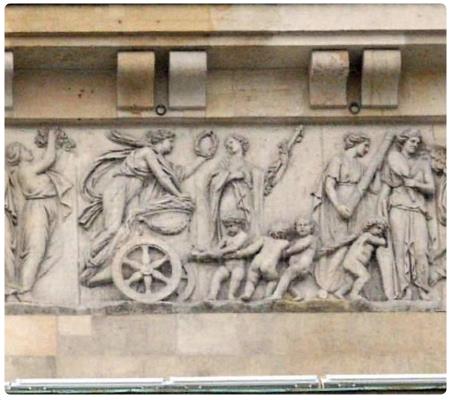 After
seven years, in 1814, the Prussians, after the disastrous
Napoleonic campaign in Russia and the subsequent victory of
the Sixth Anti-French Coalition, brought it back, and
added the iron cross to the crown that surmounts the auction
in the hands of the goddess of peace that you can still see
today. The Gate and quadriga were seriously damaged during
the Second World War and restored between 1956 and
1958. On 13 August 1961 the monument was closed by the
German Democratic Republic's (DDR) barrier systems,
remaining in the eastern part of the city. The quadriga,
which looked west, was turned on the opposite side and then
against the Berlin Wall. At the fall of the latter, the
Brandenburg Gate was reopened on December 22,1989, with
incredible celebrations, which many still remember with a
good deal of emotion, but the horses continue to look
eastwards... After
seven years, in 1814, the Prussians, after the disastrous
Napoleonic campaign in Russia and the subsequent victory of
the Sixth Anti-French Coalition, brought it back, and
added the iron cross to the crown that surmounts the auction
in the hands of the goddess of peace that you can still see
today. The Gate and quadriga were seriously damaged during
the Second World War and restored between 1956 and
1958. On 13 August 1961 the monument was closed by the
German Democratic Republic's (DDR) barrier systems,
remaining in the eastern part of the city. The quadriga,
which looked west, was turned on the opposite side and then
against the Berlin Wall. At the fall of the latter, the
Brandenburg Gate was reopened on December 22,1989, with
incredible celebrations, which many still remember with a
good deal of emotion, but the horses continue to look
eastwards...
Communicating Courtyards
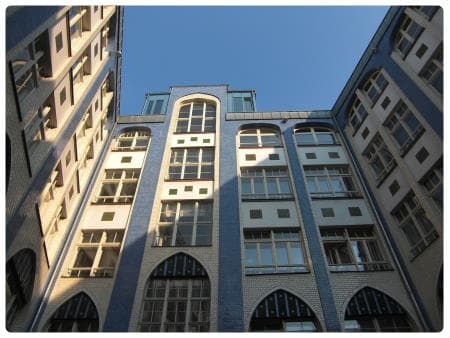 In
the early 1900s, in a fast-growing Berlin and the world's
most densely populated city, many palaces were built to
accommodate the growing number of inhabitants. These new
large new residential blocks all had the characteristic of
having interconnected courtyards. In Mitte, in the area
known as Scheunenviertel, the Hackesche Höfe is the
most famous of these courtyard systems. This courtyard
system has become one of the city's most popular tourist
attractions or is one of the favorite places even by
Berliners. It is a series of 8 interconnecting courtyards,
united together to form a single large complex with multiple
uses ("Hof" in German means courtyard). They are within
walking distance of Hackescher Markt's Berlin
Underground Station and are packed with shops, restaurants,
cafes and entertainment venues. The main entrance is at
number 40 in Rosenthalerstrasse. The area is very
popular with Berliners and visitors, and since the 1990s has
attracted the people of locals... If you want to go into
more detail, read more about
Hakesche Höfe. In
the early 1900s, in a fast-growing Berlin and the world's
most densely populated city, many palaces were built to
accommodate the growing number of inhabitants. These new
large new residential blocks all had the characteristic of
having interconnected courtyards. In Mitte, in the area
known as Scheunenviertel, the Hackesche Höfe is the
most famous of these courtyard systems. This courtyard
system has become one of the city's most popular tourist
attractions or is one of the favorite places even by
Berliners. It is a series of 8 interconnecting courtyards,
united together to form a single large complex with multiple
uses ("Hof" in German means courtyard). They are within
walking distance of Hackescher Markt's Berlin
Underground Station and are packed with shops, restaurants,
cafes and entertainment venues. The main entrance is at
number 40 in Rosenthalerstrasse. The area is very
popular with Berliners and visitors, and since the 1990s has
attracted the people of locals... If you want to go into
more detail, read more about
Hakesche Höfe.
Top
Pariser Platz
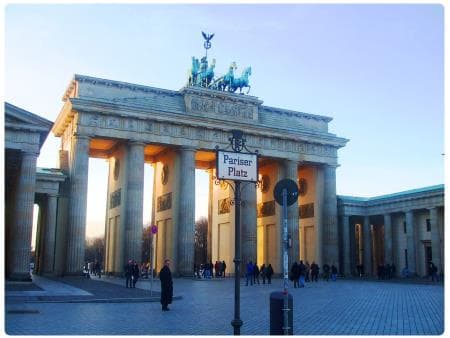 The
square on which the Brandenburg Gate overlooks is the
Pariser Platz,
named after the already mentioned conquest of Paris by
Prussian troops in 1814. The square was in the 19th century
the good living room of the cultured Berlin bourgeoisie. The
construction of the wall in 1961, after the destruction of
the war, transformed it into an distressing no-one's land.
After the reunification it was decided, not without
controversy, to reconstruct it with buildings that recalled
in size and appearance the original ones. It now houses
several buildings, including a historic luxury hotel, the
Adlon Hotel and the French Embassy in Germany,
the Academy of Art and the Kennedy Museum. The
house adjacent to the north wing of the Brandenburg Gate
belonged to the Berlin painter
Max Liebermann,
who was born in 1847 and lived in Paris for a long time.
Libermann made a decisive contribution to the emergence of
Impressionism in Germany, became president of the
Berlin Secession
and the German Academy of Culture. He had to leave
the latter office in 1933 as a Jew. He died in 1935 and his
house was occupied by a Nazi gerarch. The
square on which the Brandenburg Gate overlooks is the
Pariser Platz,
named after the already mentioned conquest of Paris by
Prussian troops in 1814. The square was in the 19th century
the good living room of the cultured Berlin bourgeoisie. The
construction of the wall in 1961, after the destruction of
the war, transformed it into an distressing no-one's land.
After the reunification it was decided, not without
controversy, to reconstruct it with buildings that recalled
in size and appearance the original ones. It now houses
several buildings, including a historic luxury hotel, the
Adlon Hotel and the French Embassy in Germany,
the Academy of Art and the Kennedy Museum. The
house adjacent to the north wing of the Brandenburg Gate
belonged to the Berlin painter
Max Liebermann,
who was born in 1847 and lived in Paris for a long time.
Libermann made a decisive contribution to the emergence of
Impressionism in Germany, became president of the
Berlin Secession
and the German Academy of Culture. He had to leave
the latter office in 1933 as a Jew. He died in 1935 and his
house was occupied by a Nazi gerarch.
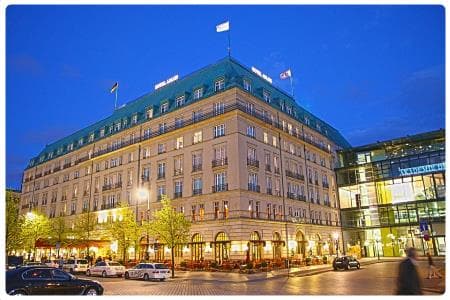
The impressive and elegant Hotel Adlon was the first
of the buildings on the Pariser Platz to be rebuilt. Its
original building, inaugurated in 1907, was frequented by
crowned heads and figures such as Rockfeller,
Einstein,
Thomas Mann, Charlie Chaplin, Greta Garbo
and Enrico Caruso to name but a few. This part of the
city centre, where Friedrichstrasse runs from north to
south, was rich in hotels, theatres and shops at the
beginning of the twentieth century; after the Second World
War it was only a pile of rubble. Today the traces of these
destructions, and of the division with the GDR, are erased,
even if they remain imprinted in the memory of the people.
Nearby,
Wilhelmstrasse
is also home to the Nazi power, chancellery and bunker 8
metres below, where Adolf Hitler took his life on 30
April 1945 (together with his partner Eva Braun).
Top
The
long Lime Avenue, the Unter den Linden
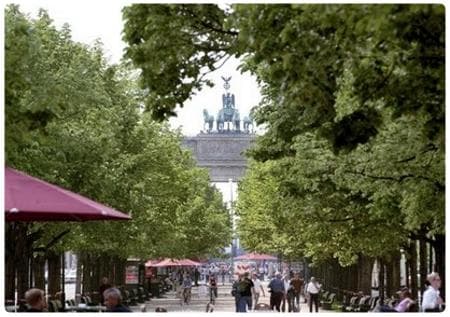 From
the Brandenburg Gate, the long Viale dei Tigli, the
Unter den Linden,
originally a runway that connected the royal palace with
Tiergarten,
the court hunting ground, was laid out as a boulevard in
1647 and decorated with rows of lime trees that gave it its
name. In the nineteenth century it became the favourite walk
of Berliners. Reduced in rubble by bombardments, it was
rebuilt in the post-war period with anonymous buildings. Now
you are trying to recreate the atmosphere of the past and
rebuild the walk in the middle of the avenue, with kiosks
and benches. From
the Brandenburg Gate, the long Viale dei Tigli, the
Unter den Linden,
originally a runway that connected the royal palace with
Tiergarten,
the court hunting ground, was laid out as a boulevard in
1647 and decorated with rows of lime trees that gave it its
name. In the nineteenth century it became the favourite walk
of Berliners. Reduced in rubble by bombardments, it was
rebuilt in the post-war period with anonymous buildings. Now
you are trying to recreate the atmosphere of the past and
rebuild the walk in the middle of the avenue, with kiosks
and benches.
Il viale Strasse des 17 Juni, la
continuazione dell'Unter dn Linden, taglia in due il
Tiergarten, un grande parco cittadino di cui
parliamo nel prossimo paragrafo.
The huge building in the Unter den Linden boulevard,
number 50 to 66, is the Russian Embassy. At
the crossroads with Friedrichstrasse there was the
first Cafe Kranzler, the only place for
special imperial pantry, with a terrace from where
you can see the promenade. The
Staatsbiliotheothek zu Berlin, the state
library, by the famous architect Hans Scharoun,
is also located on the Unter den Linden. The
library, which boasts as many as 12 million volumes,
manuscripts, documents and maps, has one of the 48
surviving specimens of the Gutenberg Bible. In 1985,
Wim Wenders made it famous throughout the
world, immortalizing it in his film Wings of
Desire. At numbers 13-15 of the Unter den
Linden, on the corner with Charlottenstrasse, there
was until recently the Deutsche Guggenheim
art gallery, with temporary exhibitions of the
highest level.
The boulevard Strasse des 17 Juni, the
continuation of the Unter dn Linden, cuts the
Tiergarten, a large city park that we talk about in
the next paragraph.
Tiergarten, the
city's green lung
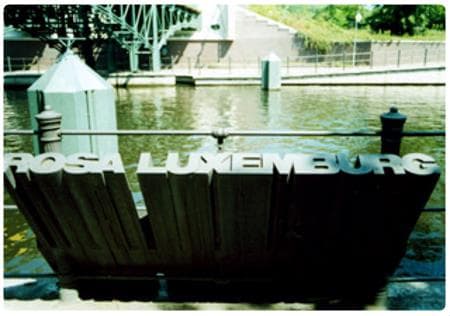 Tiergarten
Park is the most beautiful park in Berlin and one of the
largest urban parks in the world. Visitors strolling around
the Tiergarten can enjoy a wide range of enchanting trails
with wooded areas, busy lakes and meadows. With its 210
hectares, this park is the "green lung" of the German
capital (the second largest after Grünewald forest).
In Tiergarten, beneath the Lichtensteinbrücke (Ponte
Lichtenstein), there is the monument dedicated to
Rosa Luxemburg
(big letters in relief) which marks the point where the
famous revolutionary was murdered and thrown into the canal. Tiergarten
Park is the most beautiful park in Berlin and one of the
largest urban parks in the world. Visitors strolling around
the Tiergarten can enjoy a wide range of enchanting trails
with wooded areas, busy lakes and meadows. With its 210
hectares, this park is the "green lung" of the German
capital (the second largest after Grünewald forest).
In Tiergarten, beneath the Lichtensteinbrücke (Ponte
Lichtenstein), there is the monument dedicated to
Rosa Luxemburg
(big letters in relief) which marks the point where the
famous revolutionary was murdered and thrown into the canal.
Poche centinaia di metri più a nord, un memoriale su un
prato sulla riva del Neue See (Nuovo Lago) commemora
l'assassinio del compagno della Luxemburg Karl Liebknecht.
Anche lui fu uno dei fondatori del KPD (Partito Kommunist
tedesco). Entrambi i monumenti e il Ponte di
Lichtenstein sono stati progettati dalla coppia di
architetti, Ralf Schüler e Ursulina Schüler-Witte
alla fine degli anni ottanta.
Top
The Humboldt Universität
Still in the
Mitte district, at the eastern end of the Unter den
Linden, you will find the Humboldt Universität,
Berlin's oldest university (although it only dates back to
1810), founded by the humanist Wilhelm von Humboldt.
In this temple of knowledge, philosophers such as Fichte,
Hegel, Shopenhauer, linguists such as
brothers Grimm, physicists such as Max Planck and
Albert Einstein, just to name a few. Friedrich
Engels and Karl Marx also graduated here. The
University is located in the former residence of Prince
Henry, brother of Frederick The Great. You may be
interested in the articles
University in Berliny and
study in Germany.
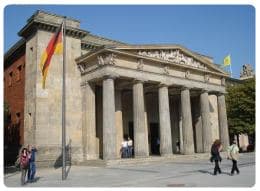 Not
far away is the Neue Wache (New Guard), a
neoclassical monument dedicated to the "victims of war and
dictatorships". Also the work of Karl Friedrich Schinkel,
it was built by Frederick William III of Prussia in
1816 as the seat of the royal guard and as a monument in
memory of soldiers who died during the Napoleonic wars. This
monument has always been considered more or less like a
mausoleum to the Unknown Soldier; depending on historical
periods, its role has always been slightly redefined: during
the period of the Weimar Republic, for example, it
was dedicated to the victims of World War I, during the GDR
to the victims of anti-fascism. Not
far away is the Neue Wache (New Guard), a
neoclassical monument dedicated to the "victims of war and
dictatorships". Also the work of Karl Friedrich Schinkel,
it was built by Frederick William III of Prussia in
1816 as the seat of the royal guard and as a monument in
memory of soldiers who died during the Napoleonic wars. This
monument has always been considered more or less like a
mausoleum to the Unknown Soldier; depending on historical
periods, its role has always been slightly redefined: during
the period of the Weimar Republic, for example, it
was dedicated to the victims of World War I, during the GDR
to the victims of anti-fascism.
Top
The
Gendarmenmarkt, the French
cathedral and the German cathedral
 Continuing
on to the Gendarmenmarkt, a fine eighteenth-century
square with its extensive airy mountainous terrain. The
square, which also houses the statue of the poet Schiller,
is considered one of the most beautiful in Germany for the
harmony of its monuments. It is also a suitable place for a
break in one of the many bars and restaurants that overlook
it. At the centre is the theatre built for the German
monarchs by Karl Friedrich Schinkel in 1818, the
Shauspielhaus, faithfully rebuilt after the war and today an
important concert hall for the city, known as Konzerthaus. Continuing
on to the Gendarmenmarkt, a fine eighteenth-century
square with its extensive airy mountainous terrain. The
square, which also houses the statue of the poet Schiller,
is considered one of the most beautiful in Germany for the
harmony of its monuments. It is also a suitable place for a
break in one of the many bars and restaurants that overlook
it. At the centre is the theatre built for the German
monarchs by Karl Friedrich Schinkel in 1818, the
Shauspielhaus, faithfully rebuilt after the war and today an
important concert hall for the city, known as Konzerthaus.
On the sides of the square are two beautiful twin churches,
the French Cathedral (Französischer Dom) and
the German Cathedral (Deuscher Dom). The first
church was built for the community of Huguenots, the French
Protestants who, after the revocation of the edict of
Nantes, found refuge in Berlin and Brandenburg towards the
end of the 17th century. The building is dominated by a
cylindrical tower with a dome, built in 1785 to the design
of Carl von Gontard, identical to that of the
German Cathedral; you can climb up and admire the view
of the city. Today the church houses a museum dedicated to
the history of Huguenots (read on the
Gendarmenmarkt).
The latter, invited to Berlin by Prince Elector Frederick
William I of Brandenburg, Calvinist himself, were
skilled craftsmen, especially in the textile and jewellery
sector. The city soon gained a prominent position in the
city, influencing its economic and cultural life, thought in
1700 20% of Berliners were French (!).
The Deuscher Dom was built for the German-speaking
Calvinist community. Today its interior, rebuilt in a modern
style, houses a permanent exhibition on parliamentary
democracy. During the Christmas holidays, from Advent to New
Year's Eve, the Gendarmenmarkt features a Christmas
market and a large ice skating rink. Spending
Christmas in Berlin is obviously very interesting,
with so many cultural events, children's shows and dozens of
markets around the city.
Top
The Historical
Museum of Germany
 The
oldest building in the Unter den Linden that has been built
to date is the Zeughaus (Ancient Arsenal). It was
built by Frederick III of Brandenburg from 1695 to 1730 in
Baroque style for use as an arsenal of artillery. It was
later transformed into a military museum in 1875. Here every
March Hitler celebrated the speech for the "Day of
Memory", Volkstrauertag (for the German fallen in
World War I). In 1952, the government of the GDR converted
him to the German History Museum (communist history
of Germany). Today after the unification has become the
Historical Museum of Germany. The courtyard of the
building is very particular with 22 dramatic masks of dying
warriors by Andreas Schluter. The
oldest building in the Unter den Linden that has been built
to date is the Zeughaus (Ancient Arsenal). It was
built by Frederick III of Brandenburg from 1695 to 1730 in
Baroque style for use as an arsenal of artillery. It was
later transformed into a military museum in 1875. Here every
March Hitler celebrated the speech for the "Day of
Memory", Volkstrauertag (for the German fallen in
World War I). In 1952, the government of the GDR converted
him to the German History Museum (communist history
of Germany). Today after the unification has become the
Historical Museum of Germany. The courtyard of the
building is very particular with 22 dramatic masks of dying
warriors by Andreas Schluter.
Top
Another
beautiful square, Bebelplatz
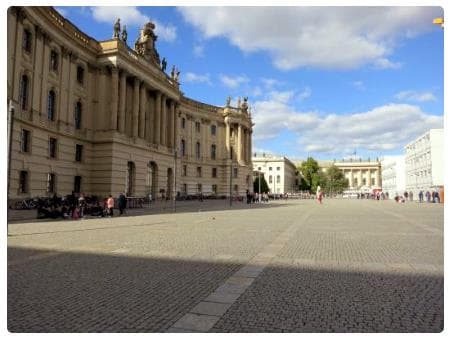 Another
beautiful square in the Mitte district is Bebelplatz.
The square should have become the centre of the Forum
Fridericiarum, an area with ancient Roman-style
buildings designed by Georg Wenzelaus von Knobelsdorff.
In Frederick the Great's classical idea, he should
have been the centre of his Berlin, with a series of
buildings that symbolized the freedom of science, arts and
religion. The project was not completed, however, but the
square remains very beautiful. Another
beautiful square in the Mitte district is Bebelplatz.
The square should have become the centre of the Forum
Fridericiarum, an area with ancient Roman-style
buildings designed by Georg Wenzelaus von Knobelsdorff.
In Frederick the Great's classical idea, he should
have been the centre of his Berlin, with a series of
buildings that symbolized the freedom of science, arts and
religion. The project was not completed, however, but the
square remains very beautiful.
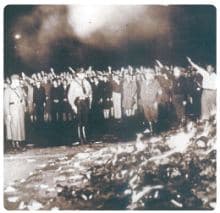 All
buildings, seriously damaged during the war, were rebuilt in
the 1950s and 1960s. At the centre of the square, dominated
by the Alte Bibliotek, is a monument of the Israeli
Micha Ullmann in the paving that recalls the burning
of books here on 10 May 1933 in the presence of Goebbels
(to which, unfortunately, the students of the nearby
university participated). Here they burned about 25,000
volumes considered "dangerous" by the Nazis. Next to
Ullmann's monument is a plaque with a quote from Heinrich
Heine:"When the books are burned, people will
eventually be burned as well." There are many historical
buildings on the square: the Opera Palace, the
Deutsche Staatsoper, St. Hedwigs Cathedral (St-Hedwigs-Kathedrale);
opposite the cathedral, the Equestrian Statue of
Frederick the Great and the already mentioned
Humboldt Universität. All
buildings, seriously damaged during the war, were rebuilt in
the 1950s and 1960s. At the centre of the square, dominated
by the Alte Bibliotek, is a monument of the Israeli
Micha Ullmann in the paving that recalls the burning
of books here on 10 May 1933 in the presence of Goebbels
(to which, unfortunately, the students of the nearby
university participated). Here they burned about 25,000
volumes considered "dangerous" by the Nazis. Next to
Ullmann's monument is a plaque with a quote from Heinrich
Heine:"When the books are burned, people will
eventually be burned as well." There are many historical
buildings on the square: the Opera Palace, the
Deutsche Staatsoper, St. Hedwigs Cathedral (St-Hedwigs-Kathedrale);
opposite the cathedral, the Equestrian Statue of
Frederick the Great and the already mentioned
Humboldt Universität.
Top
Berlin Opera House
 The
Berlin Opera House was commissioned by Frederick
II in 1741, was one of the works of the Fredericianum
Forum project we have just talked about. The theatre was
officially inaugurated with Heinrich Graun's
performance in "Caesar and Cleopatra" in 1742. Almost
a century after its opening, in 1842, the State Opera under
Gottfried Wilhelm Taubert, began the tradition of
holding symphonic concerts. That year the composer Felix
Mendelssohn participated in several of the most
important productions. Towards the end of the nineteenth
century, the Opera was already established as a musical
institution on the world stage and had hosted first
performances by composers such as Felix von Weingartner,
Richard Strauss and Leo Blech. After a crisis
after the end of World War I, in the early 1920s, the
Opera was significantly renewed and the presence of
world-renowned conductors and composers such as Erich
Kleiber, Otto Klemperer, Alexander Zemlinsky
and Bruno Walter contributed to bring it back to the
international music scene. In 1945, in a Berlin devastated
by bombs, Herbert von Karajan conducted his last concert
with the Staatskapelle, the Opera Symphony Orchestra.
After a period of decadence following the destruction of the
war, after reunification, the Opera has returned to its
normal repertoire with particular attention to Baroque
opera. In the early 1990s it was renamed Staatsoper Unter
den Linden and Daniel Barenboim was appointed
music director. The
Berlin Opera House was commissioned by Frederick
II in 1741, was one of the works of the Fredericianum
Forum project we have just talked about. The theatre was
officially inaugurated with Heinrich Graun's
performance in "Caesar and Cleopatra" in 1742. Almost
a century after its opening, in 1842, the State Opera under
Gottfried Wilhelm Taubert, began the tradition of
holding symphonic concerts. That year the composer Felix
Mendelssohn participated in several of the most
important productions. Towards the end of the nineteenth
century, the Opera was already established as a musical
institution on the world stage and had hosted first
performances by composers such as Felix von Weingartner,
Richard Strauss and Leo Blech. After a crisis
after the end of World War I, in the early 1920s, the
Opera was significantly renewed and the presence of
world-renowned conductors and composers such as Erich
Kleiber, Otto Klemperer, Alexander Zemlinsky
and Bruno Walter contributed to bring it back to the
international music scene. In 1945, in a Berlin devastated
by bombs, Herbert von Karajan conducted his last concert
with the Staatskapelle, the Opera Symphony Orchestra.
After a period of decadence following the destruction of the
war, after reunification, the Opera has returned to its
normal repertoire with particular attention to Baroque
opera. In the early 1990s it was renamed Staatsoper Unter
den Linden and Daniel Barenboim was appointed
music director.
Top
Museum Island,
UNESCO World Heritage Site
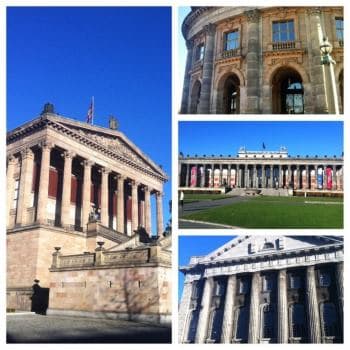 One
of the places not to be missed in the Mitte district is the
Museumsinsel,
the Museum Island, in the northern part of the island on the
river Spree, in the heart of the city, declared a
UNESCO World Heritage Site for its unique characteristics.
The name "museum island" is due to the large number of
world-class museums built over a century, from 1822 to 1930,
on a reclaimed marshy area. The oldest museum on the island
is the
Altes Museum, the old museum, built from 1822
by the aforementioned architect Schinkel to house the
collection of antiquities of Federico Guglielmo III. One
of the places not to be missed in the Mitte district is the
Museumsinsel,
the Museum Island, in the northern part of the island on the
river Spree, in the heart of the city, declared a
UNESCO World Heritage Site for its unique characteristics.
The name "museum island" is due to the large number of
world-class museums built over a century, from 1822 to 1930,
on a reclaimed marshy area. The oldest museum on the island
is the
Altes Museum, the old museum, built from 1822
by the aforementioned architect Schinkel to house the
collection of antiquities of Federico Guglielmo III.
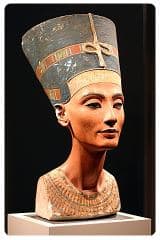 The
Neues Museum,
the new museum, was built in 1855. Completely destroyed
during the war and ruined until 1986, it was rebuilt the
same as the original and reopened at the end of 2009. It
houses the Egyptian collection, including the famous Bust
of Nefertiti. The
Neues Museum,
the new museum, was built in 1855. Completely destroyed
during the war and ruined until 1986, it was rebuilt the
same as the original and reopened at the end of 2009. It
houses the Egyptian collection, including the famous Bust
of Nefertiti.
In 1876 the
Alte Nationalgalerie, the old national
gallery, was inaugurated to exhibit the collection of
nineteenth century works of art donated by banker Joachim
H. Wagener. Even this building, half-decreased by the
war, reopened only in 2001, after a long restoration. In
addition to works of German
Romanticism
by Karl Friedrich Schinkel, Karl Blechen and
Caspar David Friedrich, the collection, which was
dispersed and recomposed after the war, includes works by
Arnold Böcklin, Adolph von Menzel and Max
Liebermann. In addition to these artists, there are
works by French Impressionists such as Édouard Manet
and Claude Monet. In 1907 the
Bode Museum
was opened in 1907, recognizable for its dark copper dome,
exhibiting early Christian, Byzantine and late ancient art
works and most of the collections of the German Egyptian
Museum. It houses among others the Münzkabinett,
the Numismatic Cabinet, one of the most important
numismatic collections in the world, with over 500 thousand
pieces.
The last museum to be built in this area was the fantastic
Pergamon Museum.
Unique of its kind, completed in 1930, this archaeological
museum takes its name from the city of Pergamon in
Anatolia and houses monumental buildings rebuilt to
natural dimensions, such as the Altar of Pergamon,
the Market Gate of Miletus and the Gate of Ishtar.
Seeing these life-size architectures is a must-see
experience that happens in few other places around the
world. These museums are not only works of art in
themselves, but also very pleasant places where you can
spend a day among bookshops, cafes and
restaurants where you can take a moment of
reflection during your visit to the city. See the
list of
all museums in Berlin.
Top
A very famous social
centre
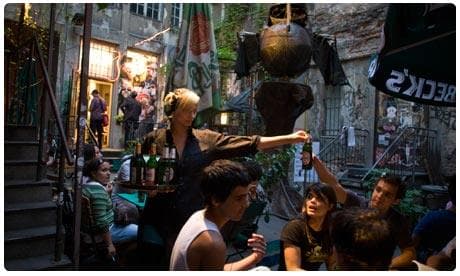 An
alternative cultural place in Berlin? Take a look at what
was once the Kunsthaus Tacheles, a Berlin artist's
house, the most active social centre since 1990. A creative
and stimulating environment, a building occupied by artists
who prevented its demolition, located in Oranienburger
Straße. At the forefront of the urban art scene for
several years, the building housed 30 ateliers, an arthouse
cinema, the famous Café Zapata and free concert,
theatre and dance venues. The past is a must, the building
can no longer be visited inside. Many young artists grew up
here between 1990 (year of occupation) and 2012, the year of
police clearance. To stay for a while was that great and
beautiful mural, which in its simplicity and immediacy,
asked "How long is now?" a sentence in English with a
double meaning:' how much time has passed?', but also
'how long does the present time last, the moment we are
living? Read on:
Kunsthaus Tacheles. An
alternative cultural place in Berlin? Take a look at what
was once the Kunsthaus Tacheles, a Berlin artist's
house, the most active social centre since 1990. A creative
and stimulating environment, a building occupied by artists
who prevented its demolition, located in Oranienburger
Straße. At the forefront of the urban art scene for
several years, the building housed 30 ateliers, an arthouse
cinema, the famous Café Zapata and free concert,
theatre and dance venues. The past is a must, the building
can no longer be visited inside. Many young artists grew up
here between 1990 (year of occupation) and 2012, the year of
police clearance. To stay for a while was that great and
beautiful mural, which in its simplicity and immediacy,
asked "How long is now?" a sentence in English with a
double meaning:' how much time has passed?', but also
'how long does the present time last, the moment we are
living? Read on:
Kunsthaus Tacheles.
Top
The legendary
Alexanderplatz
 On
your tour of the Mitte district, you can't fail to visit
Alexanderplatz, Berlin's iconic square, which has always
been one of the most animated places. A borderline between
historic Berlin and socialist Berlin, a daily hub of
hundreds of thousands of people. It took its current name in
1805, on the occasion of the visit of Tsar Alexander I.
In the 1920s, the square was together with Potsdamer Platz,
the heart of Berlin at night. Read also nightlife in Berlin.
He described well that period in 1929 Alfred Döblin, who
immortalized it with his novel, Berlin Alexanderplatz,
the first German metropolitan novel, about the years of the
Weimar Republic that preceded Nazism, from which two
films were taken, the last of which was by Rainer Werner
Fassbinder in 1980. On
your tour of the Mitte district, you can't fail to visit
Alexanderplatz, Berlin's iconic square, which has always
been one of the most animated places. A borderline between
historic Berlin and socialist Berlin, a daily hub of
hundreds of thousands of people. It took its current name in
1805, on the occasion of the visit of Tsar Alexander I.
In the 1920s, the square was together with Potsdamer Platz,
the heart of Berlin at night. Read also nightlife in Berlin.
He described well that period in 1929 Alfred Döblin, who
immortalized it with his novel, Berlin Alexanderplatz,
the first German metropolitan novel, about the years of the
Weimar Republic that preceded Nazism, from which two
films were taken, the last of which was by Rainer Werner
Fassbinder in 1980.
 The
square, largely destroyed during the war, was rebuilt in the
1960s and was located in the part of Berlin administered by
the GDR. Alexanderplatz is surrounded by several famous
buildings, including the
Fernsehturm, the Television Tower, the
second highest structure of its kind in Europe. At the
center of the square is the 1969 Universal Clock, a
structure that rotates continuously showing the hour in the
various areas of the Earth and the great Fountain of
Friendship, also in 1969, once the meeting place of
young punk. The two twin buildings on the west side of the
old square, Alexanderhaus and Berolinahaus,
and Haus des Lehrers, remain of the old square. The
first two built between 1929 and 1932 on the design of Peter
Behrens are today under protection for their artistic
characteristics to be preserved. The Haus des Lehrers
(teacher's house), built in 1962, was the first post-war
building in the square. During the Peace Revolution in 1989,
which led to the fall of the wall, the demonstration on 4
November that year was the largest gathering in the history
of East Germany. The Berliners simply call this square
Alex. See also
Alexanderplatz
article. The
square, largely destroyed during the war, was rebuilt in the
1960s and was located in the part of Berlin administered by
the GDR. Alexanderplatz is surrounded by several famous
buildings, including the
Fernsehturm, the Television Tower, the
second highest structure of its kind in Europe. At the
center of the square is the 1969 Universal Clock, a
structure that rotates continuously showing the hour in the
various areas of the Earth and the great Fountain of
Friendship, also in 1969, once the meeting place of
young punk. The two twin buildings on the west side of the
old square, Alexanderhaus and Berolinahaus,
and Haus des Lehrers, remain of the old square. The
first two built between 1929 and 1932 on the design of Peter
Behrens are today under protection for their artistic
characteristics to be preserved. The Haus des Lehrers
(teacher's house), built in 1962, was the first post-war
building in the square. During the Peace Revolution in 1989,
which led to the fall of the wall, the demonstration on 4
November that year was the largest gathering in the history
of East Germany. The Berliners simply call this square
Alex. See also
Alexanderplatz
article.
Top
The Reichstag, the seat of the German federal parliament
 Not
far from the Brandenburg Gate is another of the city's symbols, the
Reichstag, the seat of the German Federal Parliament, the
Bundestag. Built on a design by the German architect of Huguenotte
origin, Paul Wallot, between 1884 and 1894, as the seat of the German
Reich parliament, before German reunification he was located right next to
the Berlin Wall. Its history has marked the recent history of
Germany. In 1933 a fire destroyed him to a large extent. It was never clear
how the fire broke out, but the Communists were blamed. This gave a decisive
boost to Hitler's German National Socialist Party (Nazi) for the
seizure of power in Germany. The rebuilt building was even more damaged at
the end of the war. Not
far from the Brandenburg Gate is another of the city's symbols, the
Reichstag, the seat of the German Federal Parliament, the
Bundestag. Built on a design by the German architect of Huguenotte
origin, Paul Wallot, between 1884 and 1894, as the seat of the German
Reich parliament, before German reunification he was located right next to
the Berlin Wall. Its history has marked the recent history of
Germany. In 1933 a fire destroyed him to a large extent. It was never clear
how the fire broke out, but the Communists were blamed. This gave a decisive
boost to Hitler's German National Socialist Party (Nazi) for the
seizure of power in Germany. The rebuilt building was even more damaged at
the end of the war.
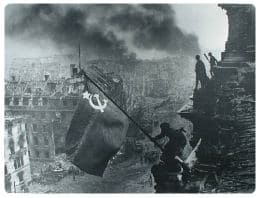 The
photo with the soldier of the Red Army who auctioned the Soviet flag of the
building, after the conquest of the city by the Russians, became one of the
most famous photos of the twentieth century, symbolizing the end of Nazism,
the defeat of Germany and the Nazi nightmare. That soldier was called
Abdulkhakim Ismailov and lived in the southern province of Dagestan,
died recently in February 2010 at the age of 93. At the end of the war, the
Reichstag ended, in the division of the city, in West Berlin, very close to
the wall. It was rebuilt between 1958 and 1972, but the central dome and
most of the ornaments were removed. Before reunification, the parliament of
the Federal Republic of Germany met here symbolically once a year,
indicating that Bonn was only a temporary capital. The
photo with the soldier of the Red Army who auctioned the Soviet flag of the
building, after the conquest of the city by the Russians, became one of the
most famous photos of the twentieth century, symbolizing the end of Nazism,
the defeat of Germany and the Nazi nightmare. That soldier was called
Abdulkhakim Ismailov and lived in the southern province of Dagestan,
died recently in February 2010 at the age of 93. At the end of the war, the
Reichstag ended, in the division of the city, in West Berlin, very close to
the wall. It was rebuilt between 1958 and 1972, but the central dome and
most of the ornaments were removed. Before reunification, the parliament of
the Federal Republic of Germany met here symbolically once a year,
indicating that Bonn was only a temporary capital.
 Immediately
after German reunification, a decision was taken to move the Bundenstag back
to Berlin, which was completed in 1999. A glass dome was added to
Norman Foster's project, which overlooks the parliament's planetary
chamber. At first this addition was very controversial, but in a few years
it became one of the most famous icons of the city in the world. Today, a
jump upwards from the famous glass dome on the rooftop terrace is a' must'
from where you can enjoy spectacular views of the Tiergarten park
(the German capital is one of the greenest cities in Europe, with over 60%
of its green surface) but expect strict security checks and long queues. For
further information see our page dedicated to the
Reichstag. Immediately
after German reunification, a decision was taken to move the Bundenstag back
to Berlin, which was completed in 1999. A glass dome was added to
Norman Foster's project, which overlooks the parliament's planetary
chamber. At first this addition was very controversial, but in a few years
it became one of the most famous icons of the city in the world. Today, a
jump upwards from the famous glass dome on the rooftop terrace is a' must'
from where you can enjoy spectacular views of the Tiergarten park
(the German capital is one of the greenest cities in Europe, with over 60%
of its green surface) but expect strict security checks and long queues. For
further information see our page dedicated to the
Reichstag.
Top
Night falls in Berlin, what you do, where you go
 Most
of the entertainment venues are in the city centre (the
districts of
Mitte,
Prenzlauer Berg,
Kreuzberg,
Friedrichshain,
Neukölln),
but the eastern part of the city has many beautiful
nightclubs. Friedrichshain is one of its most
up-and-coming neighborhoods, along with the most famous
Kreuzberg and Prenzlauer Berg, one of the city's
most fashionable areas. A leap towards the Boxhagener
Strasse and Simon-Dach Strasse and it is
difficult to imagine today that this was the heart of
East Berlin, a borderline between desires and dreams of
freedom. Read more about
Friedrichshain.
Read also
Nightlife in Berlin. Most
of the entertainment venues are in the city centre (the
districts of
Mitte,
Prenzlauer Berg,
Kreuzberg,
Friedrichshain,
Neukölln),
but the eastern part of the city has many beautiful
nightclubs. Friedrichshain is one of its most
up-and-coming neighborhoods, along with the most famous
Kreuzberg and Prenzlauer Berg, one of the city's
most fashionable areas. A leap towards the Boxhagener
Strasse and Simon-Dach Strasse and it is
difficult to imagine today that this was the heart of
East Berlin, a borderline between desires and dreams of
freedom. Read more about
Friedrichshain.
Read also
Nightlife in Berlin.
Top
Boat trip
 A
great way to discover Berlin, being the city full of bridges
and canals, is by boat. The duration of the trips varies
from one to three hours. The main embarkation points are
close to
Charlottenburg
Castle and Berlin Cathedral, but there
are others scattered throughout the city. From the boat you
can get a first idea of the city, a sort of sightseeing
panoramic tour during which you can choose
what to see in
Berlin. Read also
What to
see in Berlin for free. A
great way to discover Berlin, being the city full of bridges
and canals, is by boat. The duration of the trips varies
from one to three hours. The main embarkation points are
close to
Charlottenburg
Castle and Berlin Cathedral, but there
are others scattered throughout the city. From the boat you
can get a first idea of the city, a sort of sightseeing
panoramic tour during which you can choose
what to see in
Berlin. Read also
What to
see in Berlin for free.
Movies about Berlin
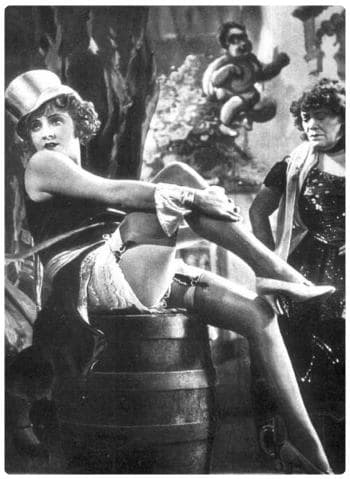 The
German capital is also one of the European film centres,
with more than 1100 movie and television production
companies and over 270 cinemas around the city. The
Berlin Film Festival is, together with
Cannes
and
Venice,
one of the three most important film festivals in the world,
and is even first in terms of number of viewers and number
of feature films screened. The main venue for the event is
Potsdamer Platz.
Hundreds of films have been shot in this endless city, let's
mention: Metropolis by Fritz Lang, The Last
Laught by Friedrich Wilhelm Murnau, The Blue
Angel (Der blaue Engel) by Josef von Sternberg,
Germany, year zero by Roberto Rossellini in
1948, all the way to his contemporaries Wings of Desire
by Wim Wenders in 1987, Lola Run by Tom
Tykwer in 1998, Good Bye, Lenin! by Wolfgang
Becker in 2003, The lives of others (Das Leben
der Anderen) by Florian Henckel von Donnersmarck in
2006. If you want to get to know this city better also
through films, read article the
Film set in
Berlin and the page dedicated to the
Berlin Film
Festival and
events. The
German capital is also one of the European film centres,
with more than 1100 movie and television production
companies and over 270 cinemas around the city. The
Berlin Film Festival is, together with
Cannes
and
Venice,
one of the three most important film festivals in the world,
and is even first in terms of number of viewers and number
of feature films screened. The main venue for the event is
Potsdamer Platz.
Hundreds of films have been shot in this endless city, let's
mention: Metropolis by Fritz Lang, The Last
Laught by Friedrich Wilhelm Murnau, The Blue
Angel (Der blaue Engel) by Josef von Sternberg,
Germany, year zero by Roberto Rossellini in
1948, all the way to his contemporaries Wings of Desire
by Wim Wenders in 1987, Lola Run by Tom
Tykwer in 1998, Good Bye, Lenin! by Wolfgang
Becker in 2003, The lives of others (Das Leben
der Anderen) by Florian Henckel von Donnersmarck in
2006. If you want to get to know this city better also
through films, read article the
Film set in
Berlin and the page dedicated to the
Berlin Film
Festival and
events.
Top
Books set in Berlin
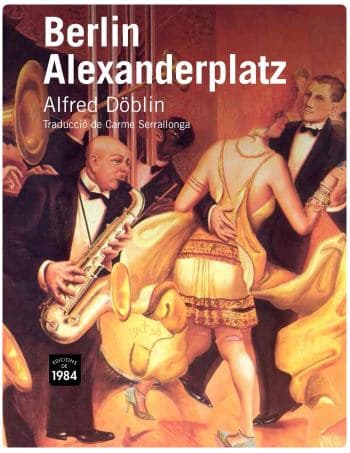 Before
you come to the German capital, you can learn a lot about
this city by reading some books. As is to be expected also
the books set in this city are a multitude. The history of
the city and European history, with the vicissitudes of
Nazism, the Second World War, the Cold War, the Berlin Wall
which divided the city in two, have often intertwined. Among
the books that have as background the German capital there
are Every Man Dies Alone in 1947 by Hans Fallada
(also known as Solo in Berlin), Berlin Alexanderplatz
by Alfred Döblin, published in 1929 and The
Innocent by the English writer Ian McEwan,
published in 1990. All three deal with periods crucial to
the history of the city, the Weimar Republic years, Döblin's
novel, the Nazi period in Fallada's novel and that of the
Cold War in Döblin. If you would like to go further, visit
the
Berlin Books page. Before
you come to the German capital, you can learn a lot about
this city by reading some books. As is to be expected also
the books set in this city are a multitude. The history of
the city and European history, with the vicissitudes of
Nazism, the Second World War, the Cold War, the Berlin Wall
which divided the city in two, have often intertwined. Among
the books that have as background the German capital there
are Every Man Dies Alone in 1947 by Hans Fallada
(also known as Solo in Berlin), Berlin Alexanderplatz
by Alfred Döblin, published in 1929 and The
Innocent by the English writer Ian McEwan,
published in 1990. All three deal with periods crucial to
the history of the city, the Weimar Republic years, Döblin's
novel, the Nazi period in Fallada's novel and that of the
Cold War in Döblin. If you would like to go further, visit
the
Berlin Books page.
Top
Finally shopping and excursions in the surroundings
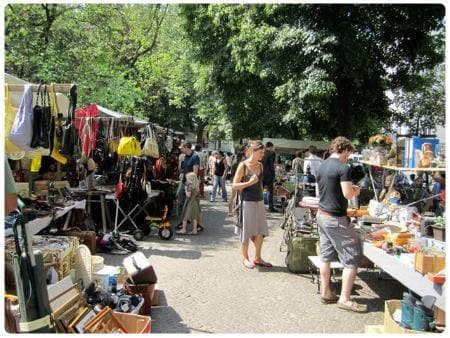 Berlin
is the paradise of shopping, you will find not only large
shopping malls and designer shops but also many second-hand
shops, markets and craft shops. The main ways to shop? Read
here:
Shopping routes.
Would you like to find some second hand opportunities? Here
are the best
flea markets in
Berlin. After having walked your route,
and drunk a good artisan beer and tasted the
Currywurst (the typical specialty of Berlin,
a grilled pork sausage cut into washers, seasoned with a
sauce based on tomato concentrate and curry) if you have a
little time left and still want to take a break from the big
metropolis, know that there are many things to see in its
surroundings. Visit the incredible park and palace complex
of Sanssouci (the German
Versailles,
see our article on the
Sanssouci Palace)
in Postdam, built as a summer residence for Federico
il Grande, which can be easily reached from the centre of
Berlin with a short journey by the S-Bahn metro system.
Don't forget to visit the picturesque Spreewald,
where the Slavic Slav minority of Sorbians keep their
traditions alive in idyllic and charming villages. Berlin
is the paradise of shopping, you will find not only large
shopping malls and designer shops but also many second-hand
shops, markets and craft shops. The main ways to shop? Read
here:
Shopping routes.
Would you like to find some second hand opportunities? Here
are the best
flea markets in
Berlin. After having walked your route,
and drunk a good artisan beer and tasted the
Currywurst (the typical specialty of Berlin,
a grilled pork sausage cut into washers, seasoned with a
sauce based on tomato concentrate and curry) if you have a
little time left and still want to take a break from the big
metropolis, know that there are many things to see in its
surroundings. Visit the incredible park and palace complex
of Sanssouci (the German
Versailles,
see our article on the
Sanssouci Palace)
in Postdam, built as a summer residence for Federico
il Grande, which can be easily reached from the centre of
Berlin with a short journey by the S-Bahn metro system.
Don't forget to visit the picturesque Spreewald,
where the Slavic Slav minority of Sorbians keep their
traditions alive in idyllic and charming villages.
Just Arrived
As soon as you landed at one of the two airports in the
city, you will have to organise your way to the city centre.
Here is a brief guide that will certainly help you:
How to get from the
Airport to the Centre.
Copyright © Informagiovani-italia.com
Map
Top
The following resources may be useful:
1.
Visitberlin. de/it Official website for tourism
2.
Italian Embassy in Berlin
Bibliography
Berlin - Damien Simonis - National Geographic - 2012
Berlin - Portrait of a city - Norbert Schürer - 2014
Berlin - Petra Dubilski - 2007
Berlin - History of a metropolis - Alexandra Richie - 2003
|
